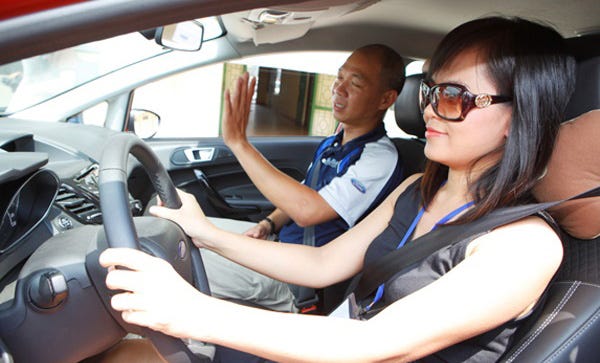One of the most important chapters of driving lessons is learning when and how to use high and low beam lights. It is one of the mainstays of driving lessons. In fact, the pundits are of the opinion that people become master drivers only when they learn the art of driving at nights and using the lights properly.

As per the State Road and Transport Authorities data, traffic-related fatalities are almost three times more at night than during the day.
Using High Beams
While driving at night, especially during long haul journeys, you will come across colossal maintenance vehicles like bulldozers and payloaders.
These vehicles move slowly. However, they are generally painted orange and can easily be spotted, but only when you properly use the beam lights. This is where a high beam of lights will come in handy. Any driving school in Langwarrin like in any other city or town would teach you the proper use of high beams so that you can spot these subjects pretty early on.
High beam lights come in handy for spotting other details while driving at nights. For instance, when you find orange cones places on roads, this means you have people working nearby, and one of multiple-lane(s) might be closed. Hence, you might need to divert.
The standard lane changing rules apply in these conditions. It is possible to take evasive actions beforehand, only and only when you can spot these alterations and subjects well in advance. This is where using high beams in the right times and on the right occasions come in handy.
When driving with high beam on, you need to dim them when you are at least 600 to 500 ft away from any vehicle coming from the opposite direction to make sure you do not blind the bloke at the wheel of that vehicle.
There is no need to stop by these signs. It may invite trouble, for the vehicle behind you might not be thinking the way you are.
Another word of caution - Tickets are generally doubled for a few violations that are committed in construction and maintenance zones of highways.
Using Low Beams
Low beams come in handy when you follow another vehicle. Standard rules say that it is best to use low beams so much so that you do not blind driver ahead. In case you have any issue, it is best to pull off your way as far as you can, and then turn the hazard lights on.
Low beams also come in handy to gauge the road condition ahead of you, when you are having a bumpy drive.
Then again, if you are driving through a rural area or in open highways away from densely populated and high traffic areas, using high beams is the standard option.
If you are driving from a brightly lit area to a dark roadway, drive slowly till your eyes get accustomed to the sudden darkness. Here again, using a low beam will be a much better option.
Then again, when you are following any vehicle, switch over to a low beam from the high beam as soon as you are within 200 to 300 ft of the vehicle ahead.
So you see, there are so many things to take into consideration while using high and low beams. It is the responsibility of your driving school to familiarise with the knowledge, when teaching you these intricacies of driving lessons in Langwarrin or in any other place, depending upon where you stay.
The author owns a reputed driving school, offering best driving lessons in Langwarrin. The author is also an avid blogger.

Post new comment
Please Register or Login to post new comment.